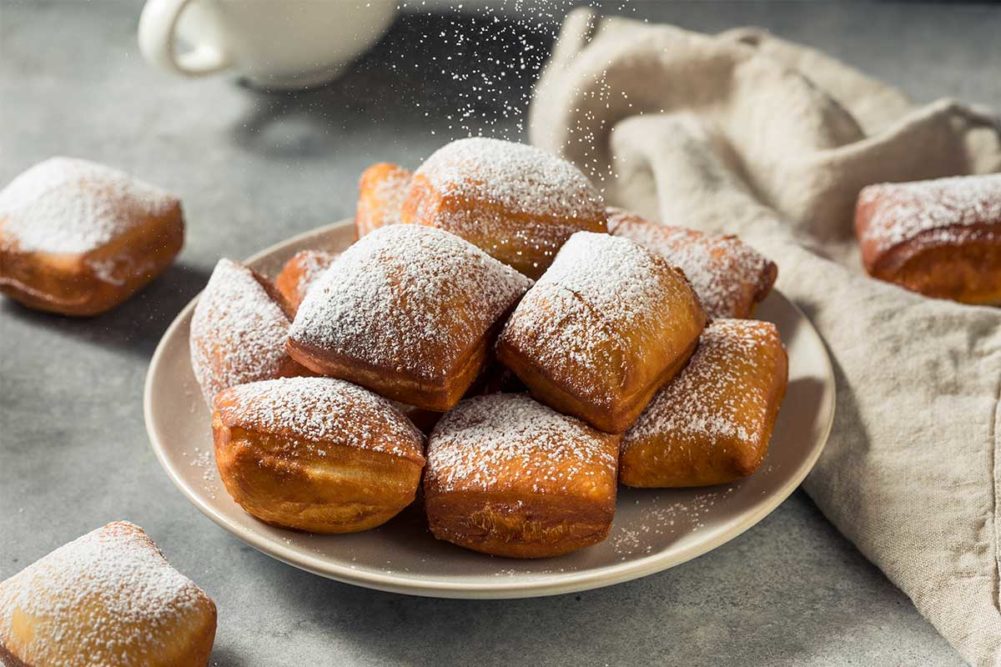In the baking and snack industries, trends constantly evolve. While some endure, others fall out of favor and still others merge with something else to create a new combination. Consumers are seeking and gobbling up new, fun and flavorful goodies.
“We are seeing creative takes on everything from bagel and doughnut shops to Korean cuisine as well as classic diner food all influencing the baking and snack categories,” said Melissa Abbott, vice president, retainer services, The Hartman Group Inc. “Skilled chefs are scaling back on costs and opening spots that are lower in overhead but big on quality and flavor.”
Collaborative dining experiences such as family-style meals at restaurants in the past couple of years have allowed consumers to branch out and try new things, said John Stephanian, vice president, global culinary and innovation, ADM.
“Consumers are definitely more engaged with some of the ingredients that are more progressive and willing to try new things,” he said. “It’s just access and the versatility of menus and chefs that are penetrating the suburbs.”
Consumers want a wide variety of items from their foods, including seeking new experiences while clinging to nostalgic favorites and demanding health and wellness benefits as well as deliciously indulgent treats.
“All the popular health trends or diets have a hand in influencing new products in both snacks and bakery,” said Marcia Mogelonsky, director of insight, food and drink, Mintel. “At the same time, however, when talking about wellness, one also has to factor in mental and emotional wellness. Consumers are looking for products that make them feel good physically as well as mentally. For mental wellness, you have to think of indulgent foods. … Balancing indulgence for mental well-being with foods that fit our needs for physical well-being is how many consumers are thinking about the way they eat now.”
Regions in North America and around the world are showing up in all types of cuisine, from Southern favorites to Asian and Latin American flavors.
“We are indeed seeing some really strong growth across the regional and global flavors, specifically Cajun, Creole, barbecue sauces and even curry and Mediterranean foods have grown as consumers seek global experiences,” said Sally Lyons Wyatt, IRI executive vice president and practice leader, client insights. “We see some large increases in Cajun sauces or Creole seasoning or Louisiana-style barbecue, really calling that out specifically.”
Global influence is a key driver for flavors and formats, with Middle Eastern and Japanese among the trendiest, said Claire Conaghan, associate director, content, Datassential. She said matcha, rose and tahini have all recently gained traction with mainstream consumers.
“Mexican bakery continues to grow after years of Mexican cuisine outside of the bakery being a source of inspiration,” Ms. Conaghan said. “We now see things like churros — even used as a flavor — mangonada, again as a flavor, and item types like concha growing. Also growing in bakery are Chinese items with many food-forward consumers learning of such flavors from new cookbooks or learning of new holidays such as increased awareness of things like moon cakes.”
She added that in the snack industry, Japanese and Mexican influences are strong, especially chili lime flavors, but so are other Asian cuisines. Ms. Conaghan also mentioned the continued strong influences of the South.
“Beignets and red velvet remain strong but lesser-known items like hummingbird cake and chess pie are gaining familiarity,” she said. “Other regional items ripe for broader adoption include Michigan pasties, Texas kolaches and East Coast whoopie pies, which experience small increases in trendiness every few years and are heading in that direction again.”
St. Louis gooey butter cake has been showing up on more menus, and Ohio Buckeyes are a great flavor option, Ms. Conaghan added.
Breads from various cultures are on the rise, such as naan and paratha from India, and an increase in demand for the equipment needed to produce them authentically, such as a tortilla press, Ms. Mogelonsky said. Asian flavors matcha, yuzu and dragon fruit and Latin American flavors of horchata and a range of chilis are growing, she added, and snacks and desserts reflect a wide range of other global influences.
“From the Middle East, for example, products flavored with rosewater, or incorporating date syrup or tahini are becoming more popular,” she said. “From India, there are more desserts, breads and snacks that are being used in the US, along with typical Indian flavor notes such as curry and ginger.”
Jasmine Weiser, executive chef at Edwards Dessert Kitchen, Minneapolis, is seeing massive growth in Asian flavors, particularly those from the South Pacific, Japan and Thailand.
“One of the most exciting parts of my job is combining global flavors with forms and desserts from other regions of the world,” she said. “I love using Asian flavors in desserts like a tres leches cake to create new, interesting desserts that consumers may not have tasted before.”
This article is an excerpt from the December 2022 issue of Baking & Snack. To read the entire feature on Culinary Influences, click here.






